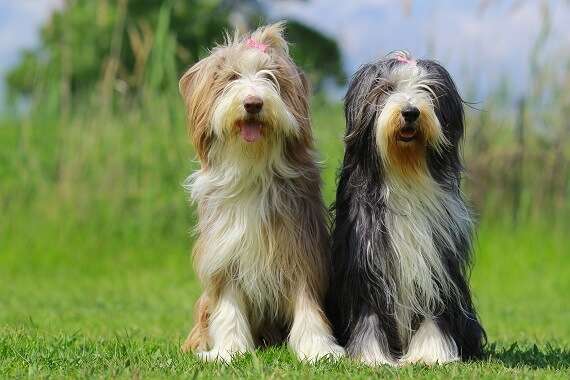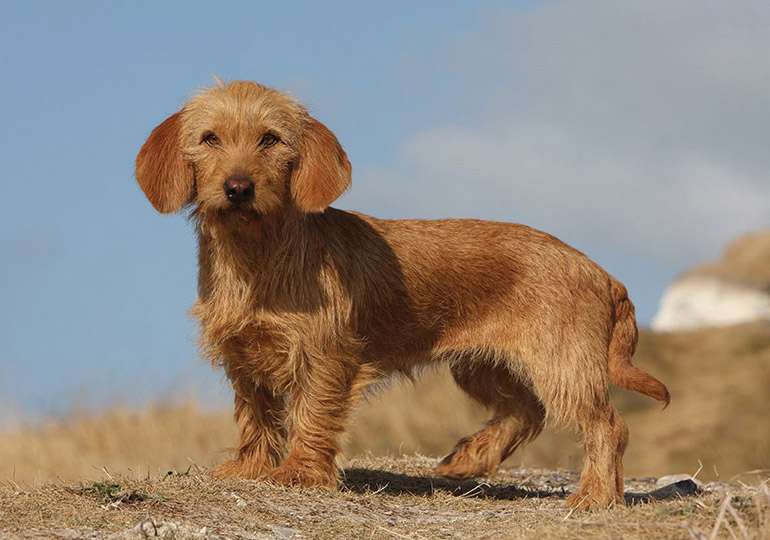
Bearded Collies typically weigh between 18 and 27 kg. According to the origin myth for the bearded collie, the Polish Lowland Sheepdog’s forebears were abandoned on the Scottish coast. They are exciting to watch and have excellent problem-solving skills. One of the biggest issues for new Beardie owners is that the breed’s intelligence makes them prone to quickly lose interest in training if it becomes too monotonous.
Physical Characteristics
Males can reach heights of 22 inches and can weigh up to 45 pounds (20 kilograms). Females can reach heights of 21 inches and can weigh up to 42 pounds (19 kilograms). Border collies resemble a lighter-weight Australian shepherd, but instead of the Aussie’s distinctive bobtail, they have a feathered tail that extends to the hocks. The body is a little bit longer than the dog is tall, and the head is similar to a collie’s. The ears appear jaunty because they are upright yet have drooping tips.
Some border collies have a three-inch-long, coarse coat, while others have a one-inch-long, silky coat. Black and white, red and white, black and grey, all-black, and tri-color are just a few of the colors that can be observed. Border collies with longer hair typically have luscious manes and tails.
Care as a Pet/ In Captivity
The Bearded Collie requires a good amount of activity and upkeep because it was originally developed to operate in cold, harsh conditions (especially for first-time dog owners). In order to raise a well-behaved Bearded Collie, their families should be ready for continuous and continual training. These dogs will discover methods to have fun on their own if not entertained frequently.

Diet
At least twice each day, give your Bearded Collie a high-quality dog food meal. These energetic dogs benefit most from meals rich in protein, although their precise nutrient requirements can change based on their age, amount of activity, and metabolism. Collies thrive on high-quality dog chow that is mostly composed of meat and contains fewer grains than the competition. Collies shouldn’t be fed meals that contain maize or soy, according to many breed specialists.
Grooming
Bearded Collies need daily brushing for a few minutes with a bristle or pin brush since they have long, thick, shaggy coats with a softer undercoat. In order to keep their coat lustrous and healthy and to prevent tangles and mats, they also need weekly routine grooming. Before brushing the hair to smooth it, any tangles should first be treated with detangling spray, then gently worked out using the owner’s fingers or a wide-toothed comb. Only using a brush to remove tangles can make them worse or damage your dog’s skin and hair.
Do not bathe the dog if his coat is matted; the coat must be free of tangles before you begin. For the Bearded Collie, use a protein-balanced shampoo and a conditioner of the highest caliber. Brush the coat with a pin brush while blow-drying it. Use a lanolin lubricant to improve texture and prevent matting or cracking.

Training
Bearded Collies require constant obedience training because they are high-energy, highly clever canines. Puppy training can start at eight weeks of age. Bearded Collies can be stubborn and have independent thoughts, so training them early can help them learn the proper manners. These lessons ought to be engaging to keep your dog’s mind active. You can maintain your Beardie’s interest by using food or playtime as forms of positive reinforcement.
Due to its high level of energy, this breed is best suited for active homes with lots of outside area for playing fetch or running. Although bearded collies get along well with youngsters and can be the ideal playmate for boisterous kids, it’s crucial to teach young children the proper way to approach and handle the dog. Like with any breed, children shouldn’t be left unattended when playing with Beardies.
Table





